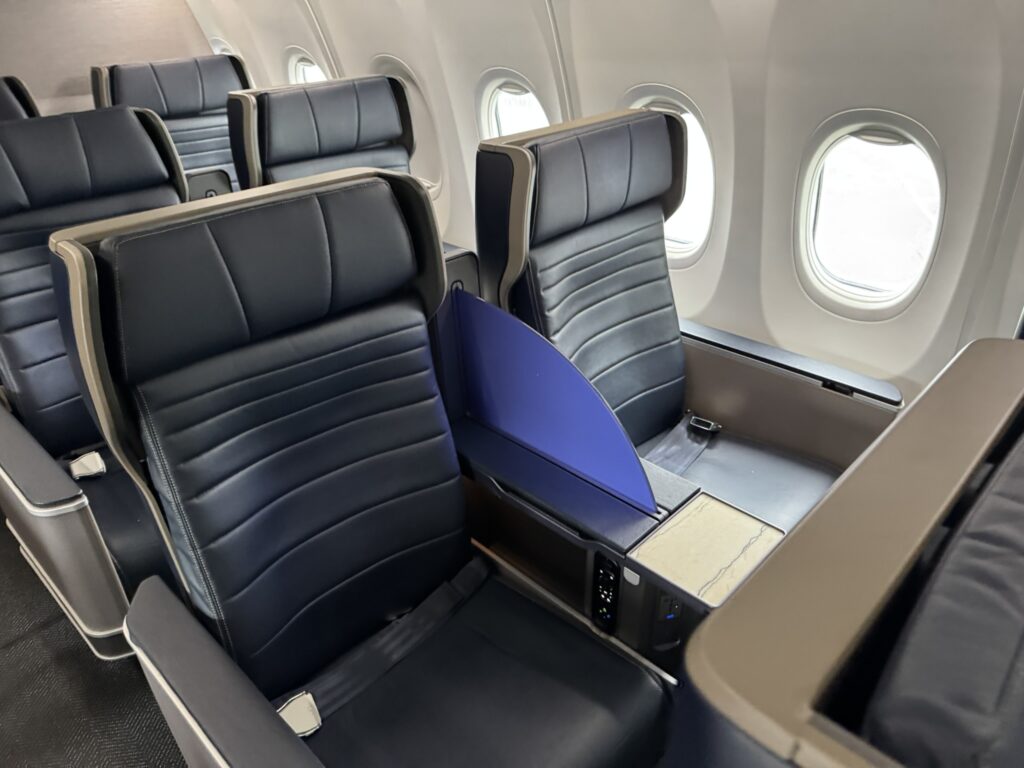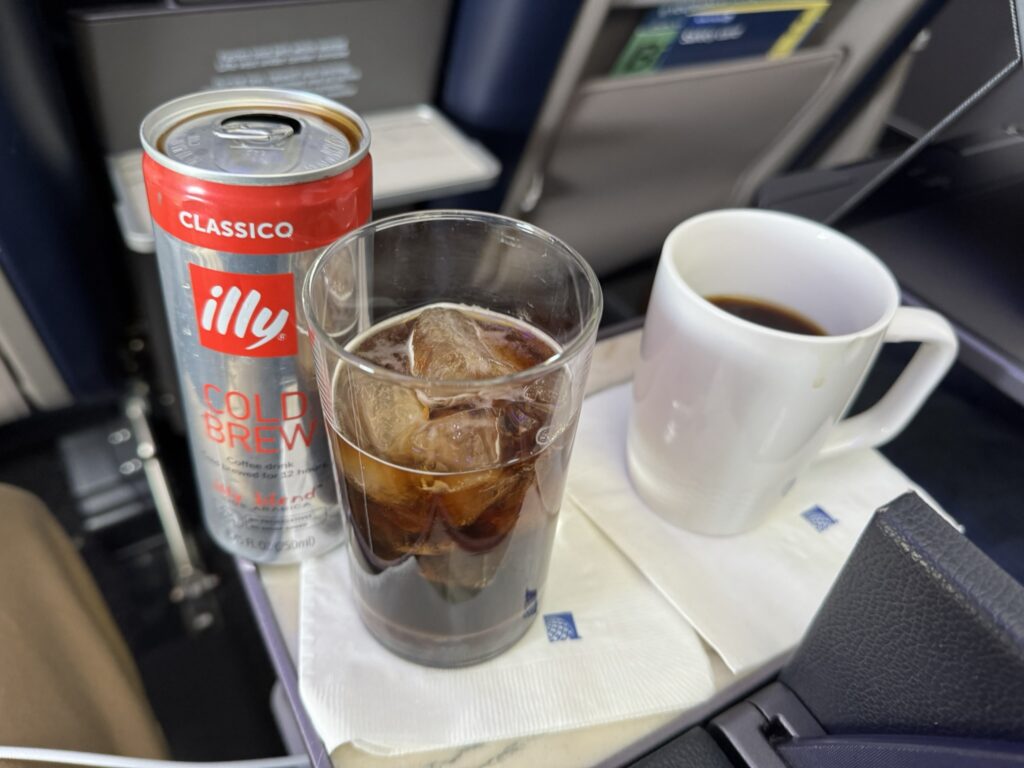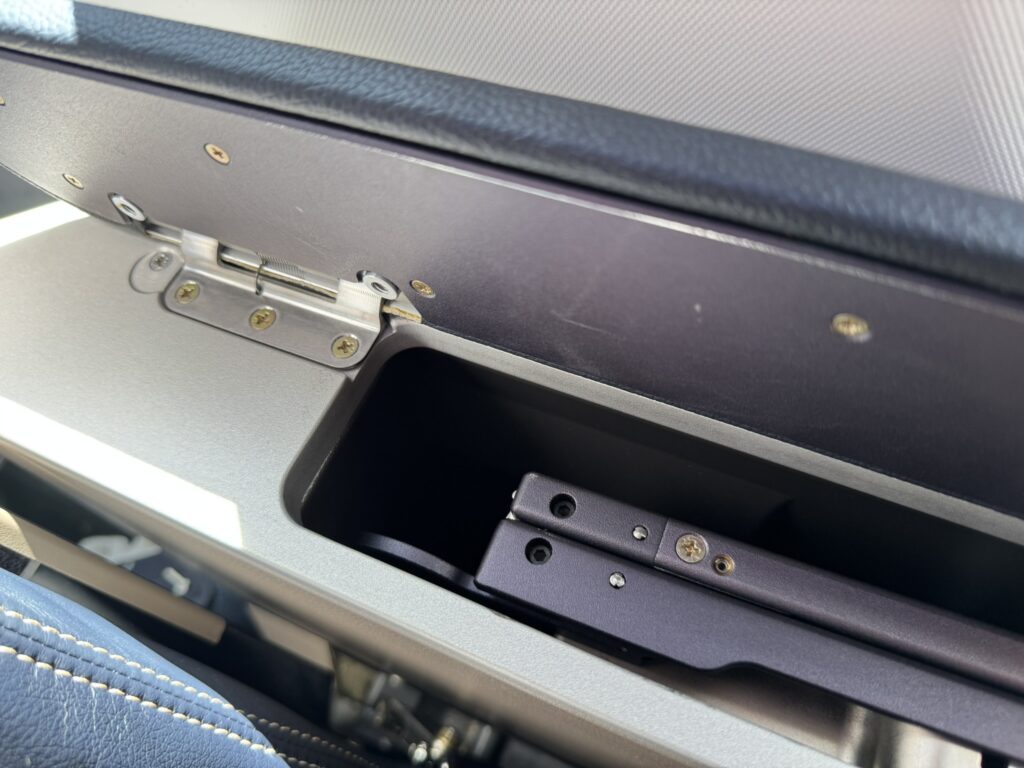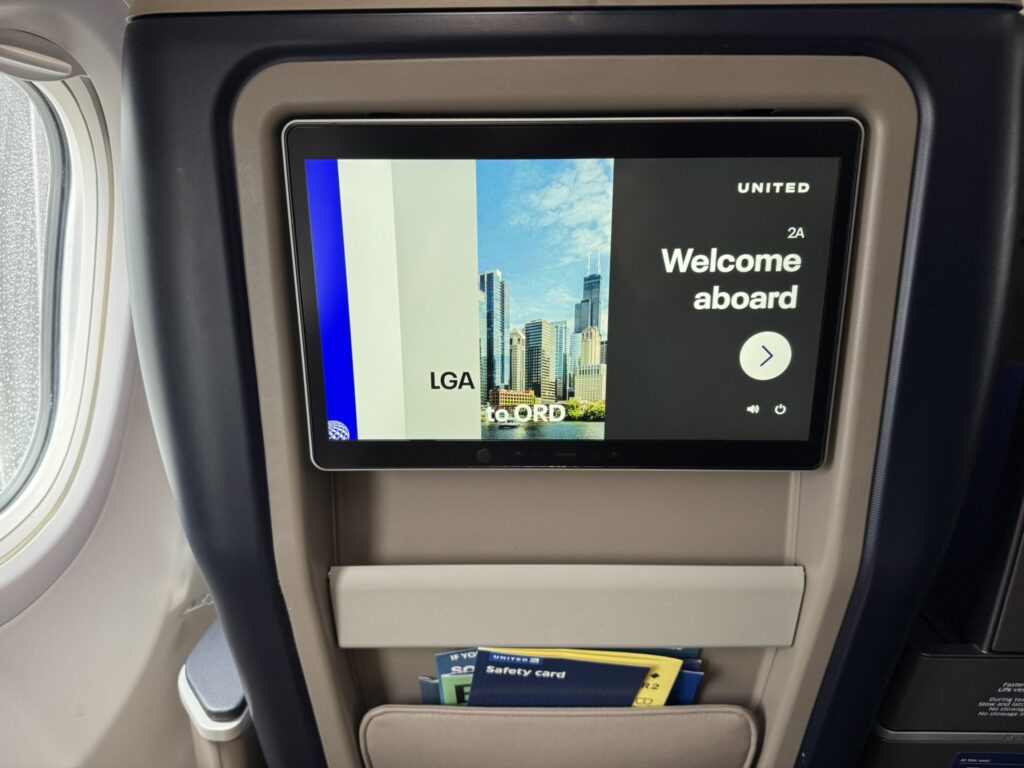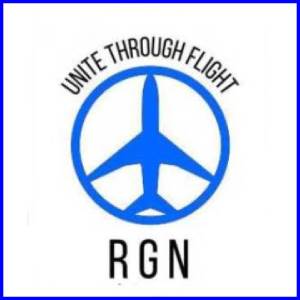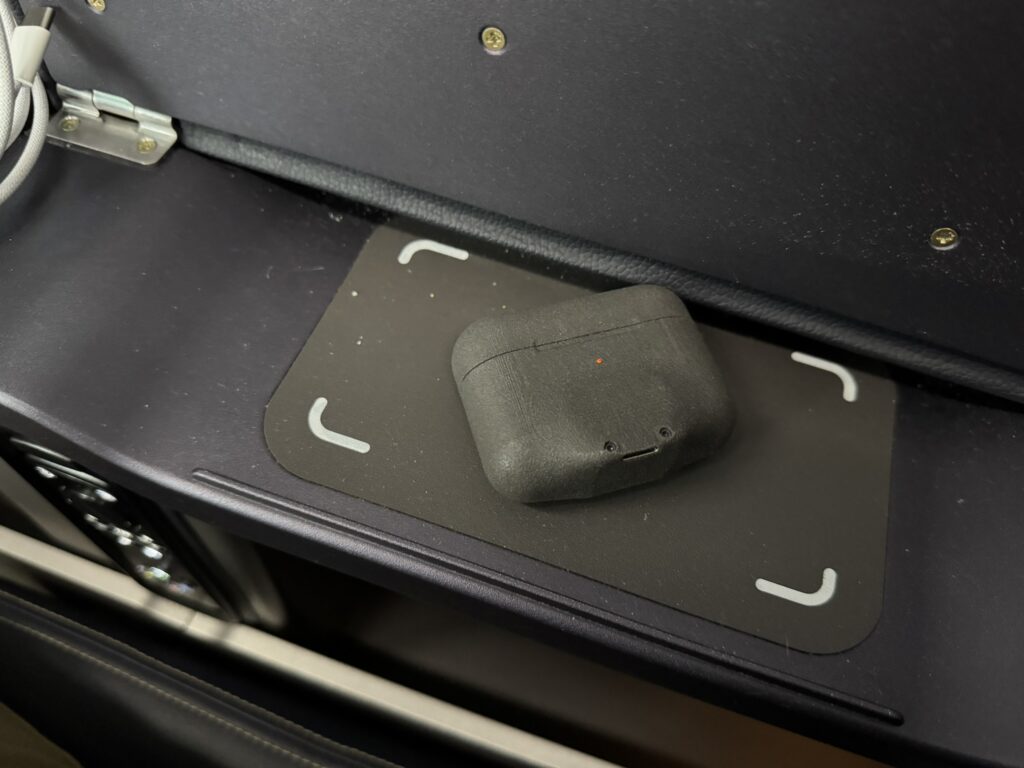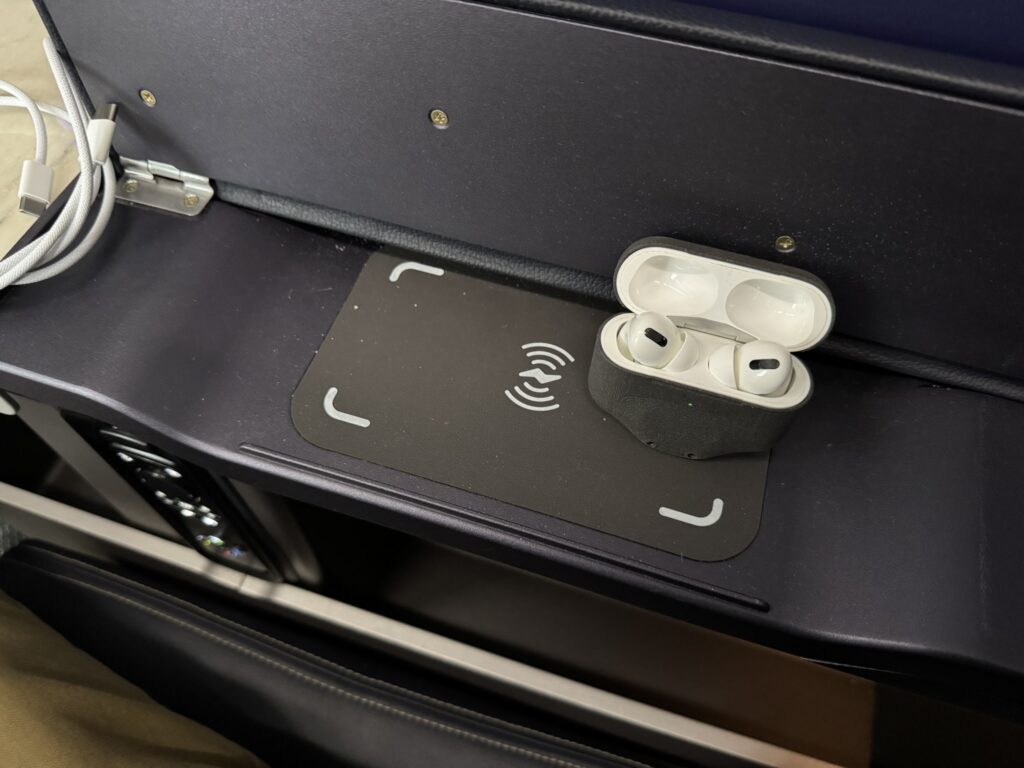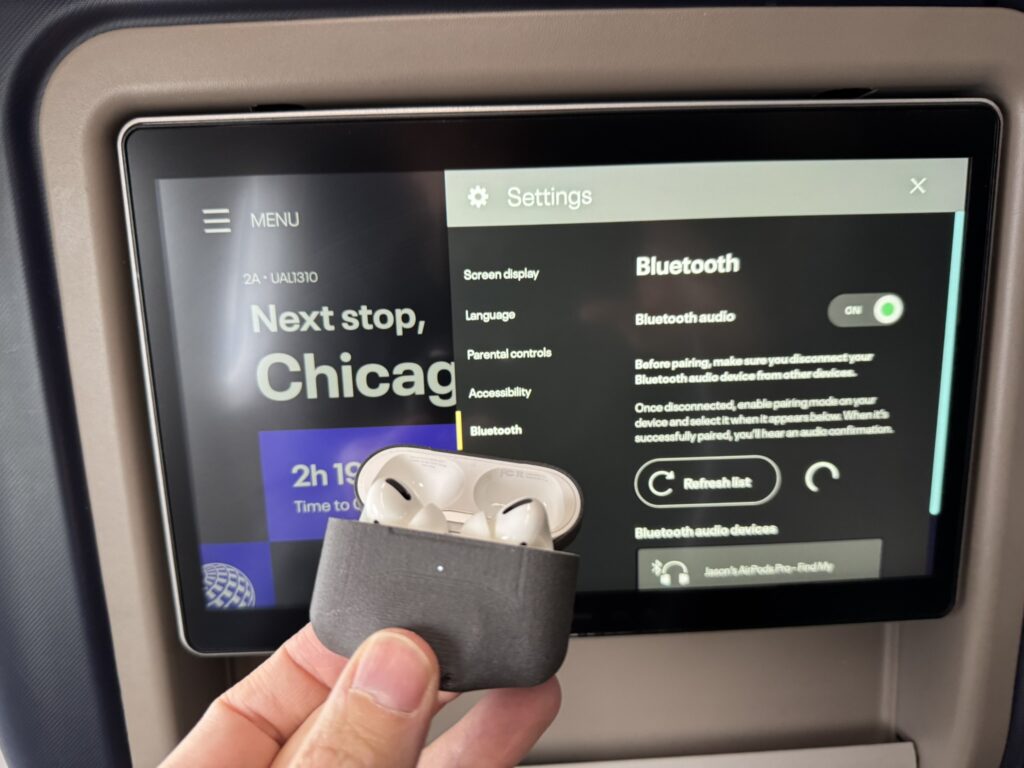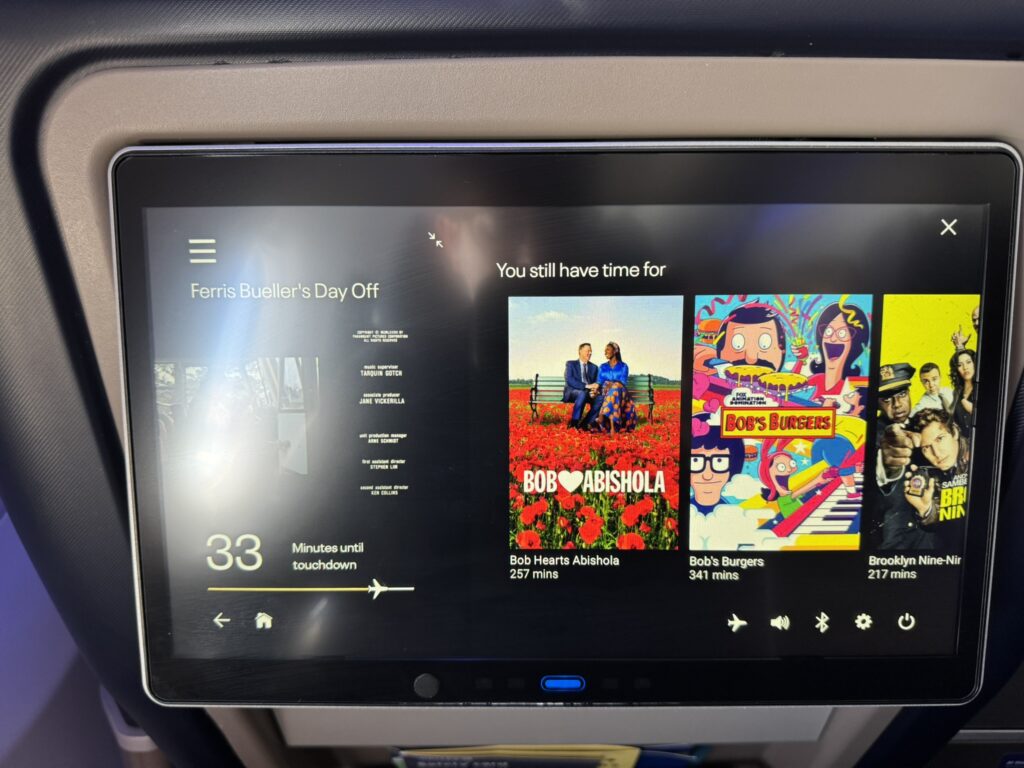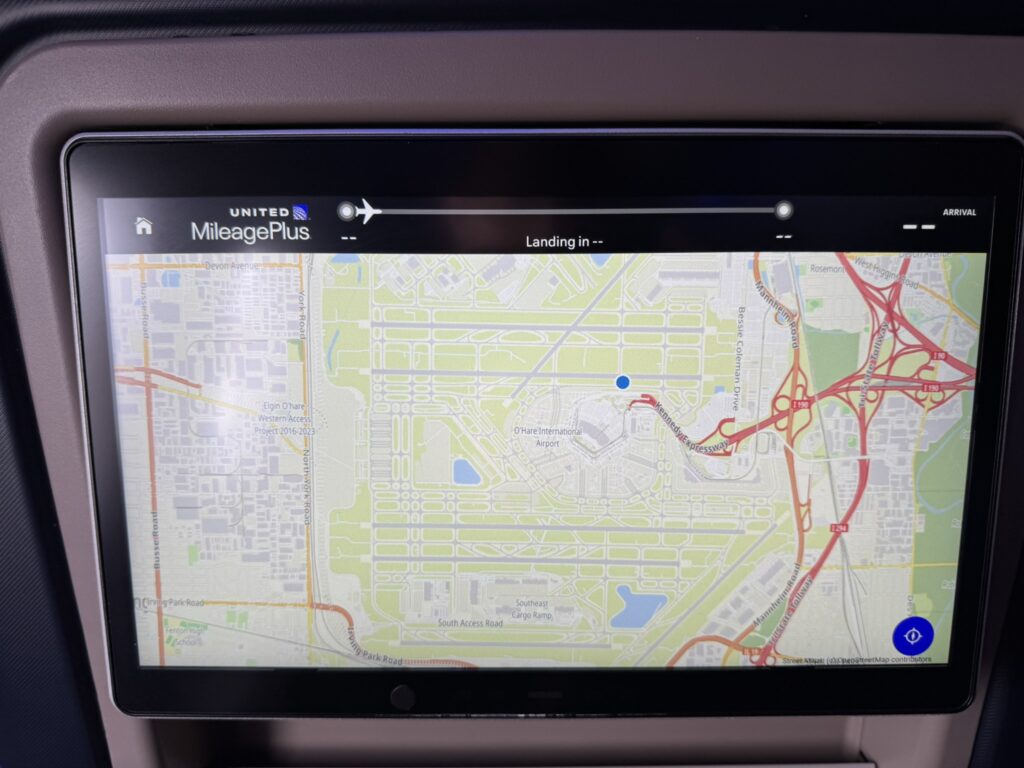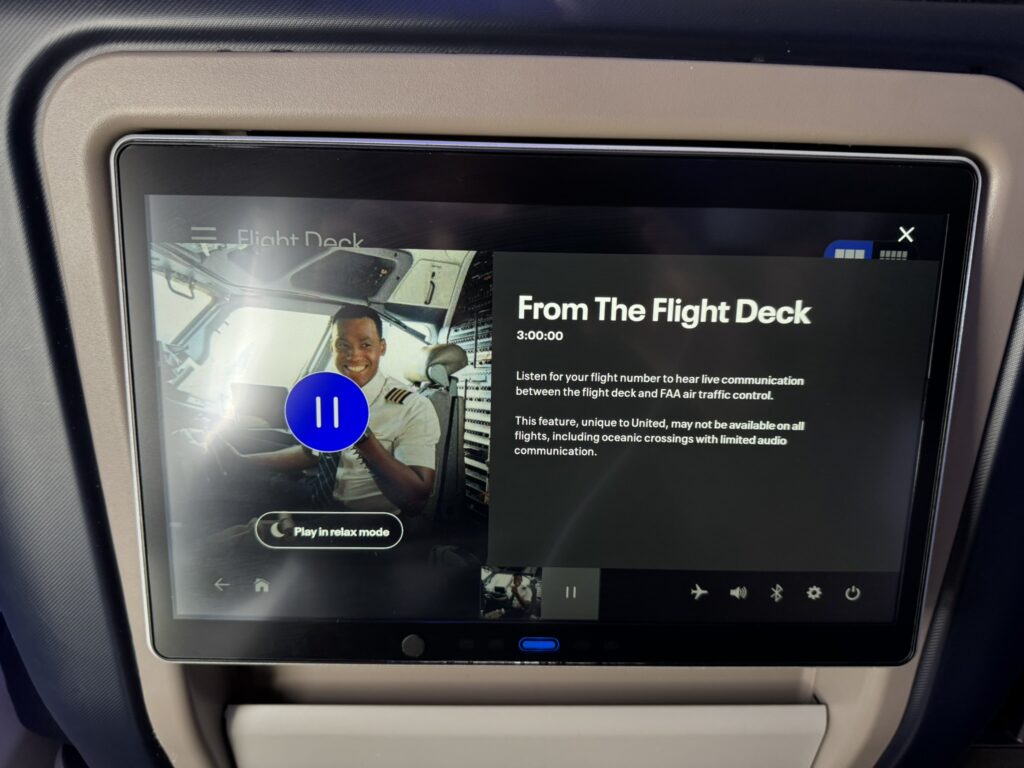As United continues its quest to dethrone Delta as the most premium airline in the United States, both carriers are continually and incrementally improving their domestic first class hard product. After trying Delta’s latest and greatest on an Airbus A321neo, I jumped at an upgrade offer to do the same on United’s Boeing 737 MAX 8 on a short hop between New York LaGuardia and Chicago O’Hare.
Unlike Delta, United is still in the midst of a major transformation. Its fleet is still a hodgepodge of ancient LiveTV screens, aircraft with no entertainment displays from the darker times at United, older seats refurbished with new on-demand in-seat entertainment, and new seats with new screens. Depending on exactly which aircraft operates your particular flight there’s a wide variety of potential configurations for now.
The 737 MAX 8 was United’s first aircraft type to feature its new ‘Signature’ interior as part of the airline’s so-called Next program in 2021, and some of those carry the airline’s newest seat.
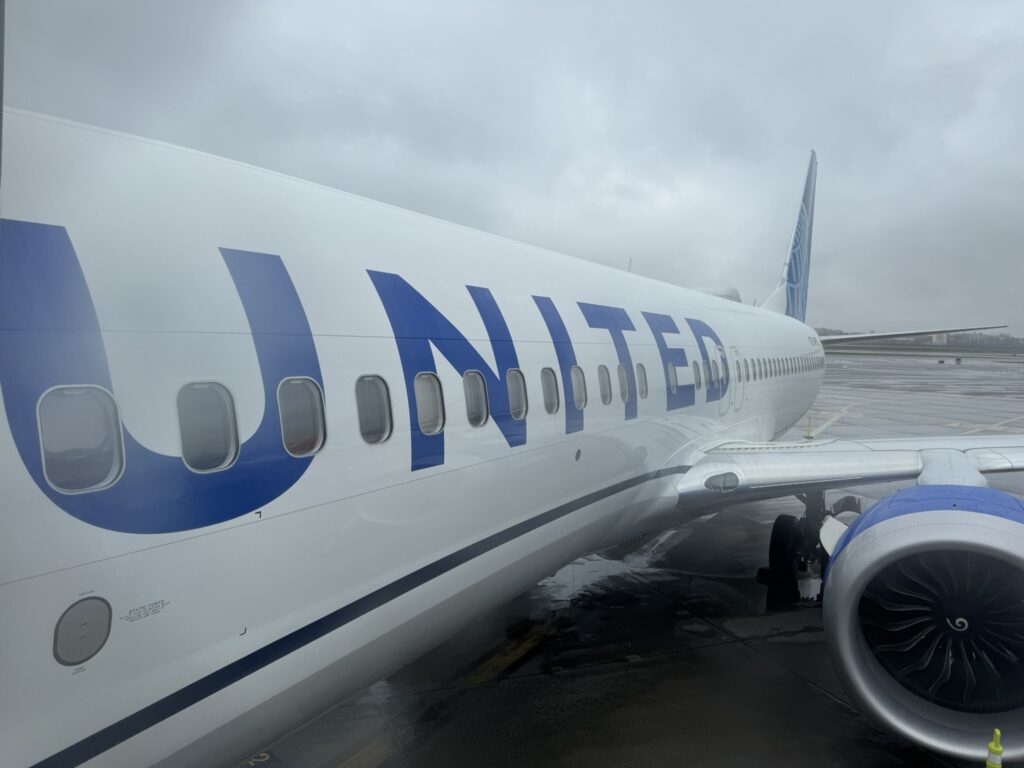 While Delta tried to make its First Class seat a bit more private with winged headrests, United opted for a curved divider between each pair of seats. I honestly don’t think it added anything other than potentially eliminating a competition for space on the armrest, but that’s grasping at straws. It does look nice, I guess.
While Delta tried to make its First Class seat a bit more private with winged headrests, United opted for a curved divider between each pair of seats. I honestly don’t think it added anything other than potentially eliminating a competition for space on the armrest, but that’s grasping at straws. It does look nice, I guess.
The seat has a number of perches for beverages, including the front of the armrest and a secondary pop-out tray in the forward seat console that I bet gets next to no use since it’s fairly hidden.
Also hidden is the mechanism to extend the tray table. It took me a few moments to locate exactly how and where to grab the tray as the loop is quite hidden and could really benefit from a simple sticker with an arrow.
The real attraction of United’s new seat is the technology. Each First Class seat contains a massive Panasonic Avionics entertainment screen (though the latest screen with the secondary LED display is reserved only for the Airbus A321neo), AC and USB power, and now Qi wireless charging.
This is where United’s hodgepodge fleet starts to annoy me a little bit. The type of USB port you’ll have access to has become totally unpredictable. Maybe it’ll be USB-A. Maybe it’ll be USB-C. Maybe it’ll be both. Maybe it’ll be neither.
This particular version of First Class for the MAX 8 has one USB-C port alongside the AC power port, but no USB-A and no ports at all on the IFE screen. It seems like I’ll be traveling with little USB adapters for a very long time.
The addition of Qi wireless charging is also a hotly debated topic. Fellow RGN writer John Walton argues that Qi wireless charging is largely not a worthwhile feature, based on his personal experiences, but I disagree.
The charging pad is tucked underneath the armrest, and I found it to be particularly useful to charge up my AirPods case while I used the buds to connect via Bluetooth to the seatback screen without needing another cable.
Just watch out during the takeoff roll or your item might slide backward and take a flight of its own to the back of the cabin.
About that Bluetooth audio, though. Panasonic still has work to do on this feature, as it is plagued by low volume that renders it borderline unusable at least when connected to devices like Apple AirPods that don’t have independent volume control. It’s really disappointing to yet again not be able to use this headlining feature and have to plug in my Bluetooth dongle to the 3.5mm jack. At this point I’m convinced this is a hardware limitation of Panasonic’s early implementation, as the issue dates back to United’s first aircraft with this feature in 2021. Panasonic has debuted an updated system as part of its nextgen Astrova IFE system, now flying on Icelandair, though I haven’t yet tested it.
The Panasonic IFE screen is crisp and United has done a fantastic job with the new user interface. A massive amount of content is available, which I appreciate, though the huge library appears to have been achieved with the use of heavy handed video compression. This is a fair tradeoff, I guess, but as these screens achieve 4K resolution, compression becomes more and more noticeable.
I love how United prompts the user with additional titles that can be watched with the time remaining in-flight, though I’m left missing Delta’s Sync interface which lets partially watched and favorited content follow the passenger between flights.
I tried using the recently announced Control Tower feature, but on both of my flights the map was blank while on the ground.
This flight also continued my streak of never hearing anything over “Channel 9,” the feature that lets passengers hear air traffic control audio. I reckon this feature should be retired if the airline can’t convince its pilots to ever activate it, an admission that pains this #AvGeek immensely.
It’s a great time to be a passenger who prefers a more premium experience and live in a city with United and Delta airport hubs. It’s clear that United is gunning for Delta and is making real progress, even if it’s a few years behind schedule.
Related Articles:
- Delta One Lounge experience trumps First Class on A321neo
- United launches Control Tower view in FlightPath3D map
- United ramps up narrowbody fleet retrofit with Signature interior
- Status-free agent takes United 737 MAX first class for a spin
- How Delta Sync seatback demonstrably improves PaxEx
- Is wireless charging the new iPod eXport in aviation?
- Press Release: Wireless charging comes to United domestic first class
All images credited to the author, Jason Rabinowitz





